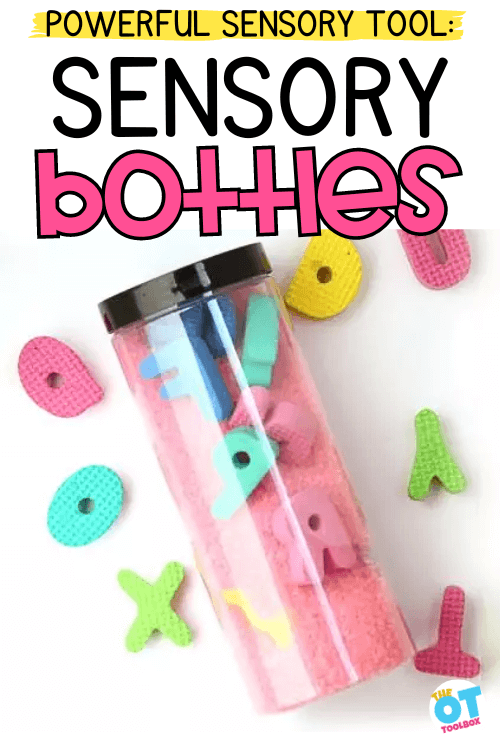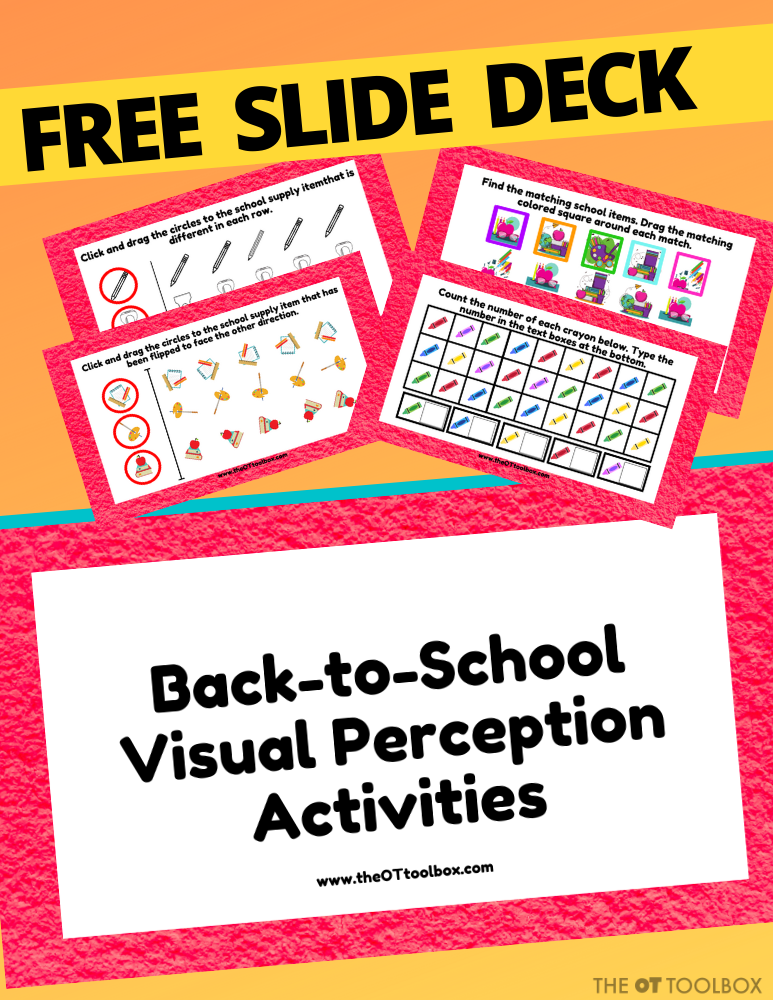If you are like many OT professionals, you are looking for back-to-school activities for occupational therapy. That’s why I wanted to get this back to school slide deck into your hands! It’s a slide deck activity for addressing visual perceptual skills and fun for occupational therapy activities that may be occurring via teletherapy this year. Use this OT slide deck to work on visual perception with a first day of school theme!
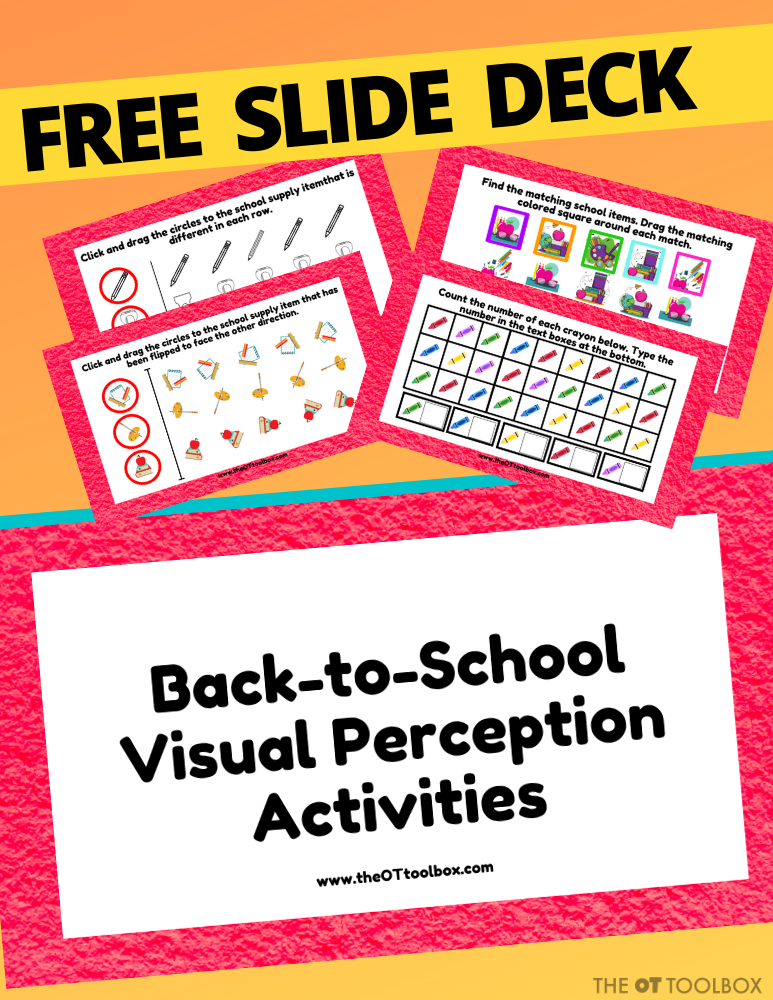
Slide Deck for Back to School Activities
Below, you’ll find a form to enter your email to grab this free interactive slide. But first, I wanted to explain how this slide deck works.
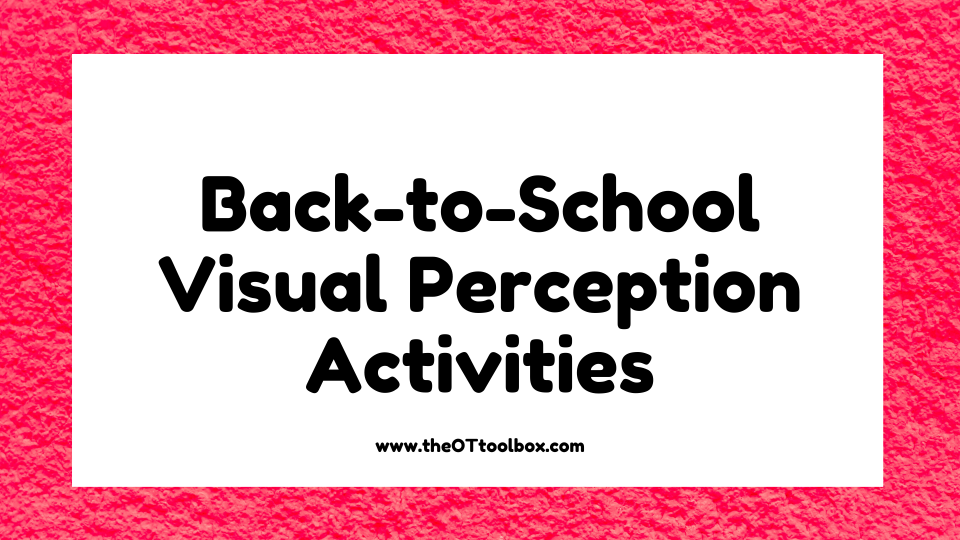
Kids can work through the interactive slides and move the movable parts of the slides to practice visual perceptual skills. The slides are designed to build skills in the following visual perceptual areas:
Form constancy
Visual discrimination
Visual memory
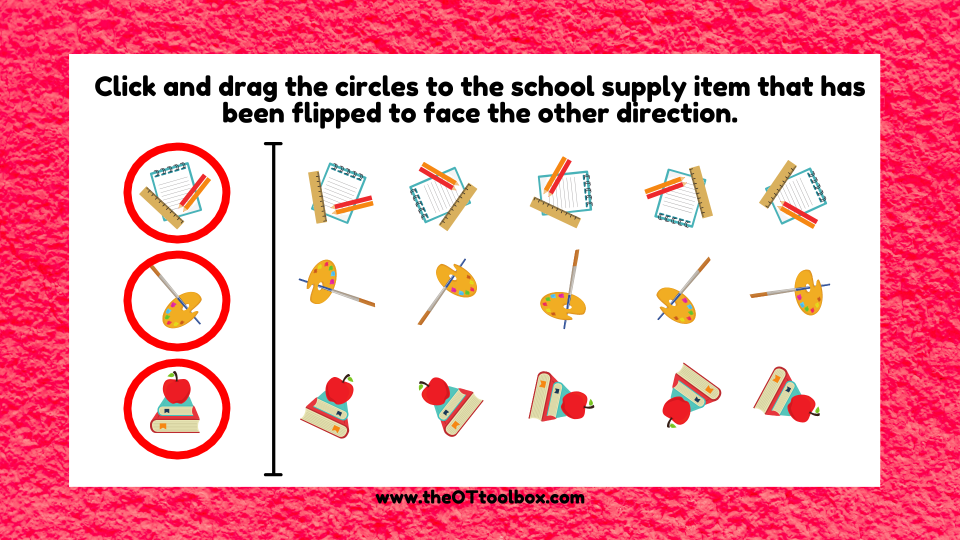
The slides include school materials for a back-to-school theme.
Children can use the slides to practice these specific skills while strengthening visual processing skills including visual scanning, visual fixation, and visual attention.
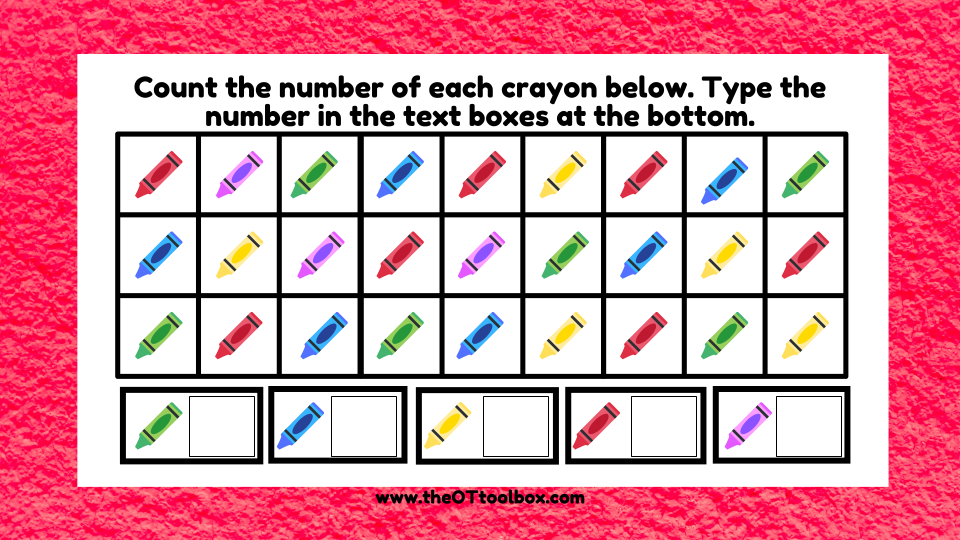
Finally, eye-hand coordination is needed to manipulate the interactive portion of these slides to move the outline to select certain images.
This blog post on visual motor skills really explains these areas of visual processing and offers tons of hands-on activities to help kids build these skill areas so that they can read and write at a functional level.
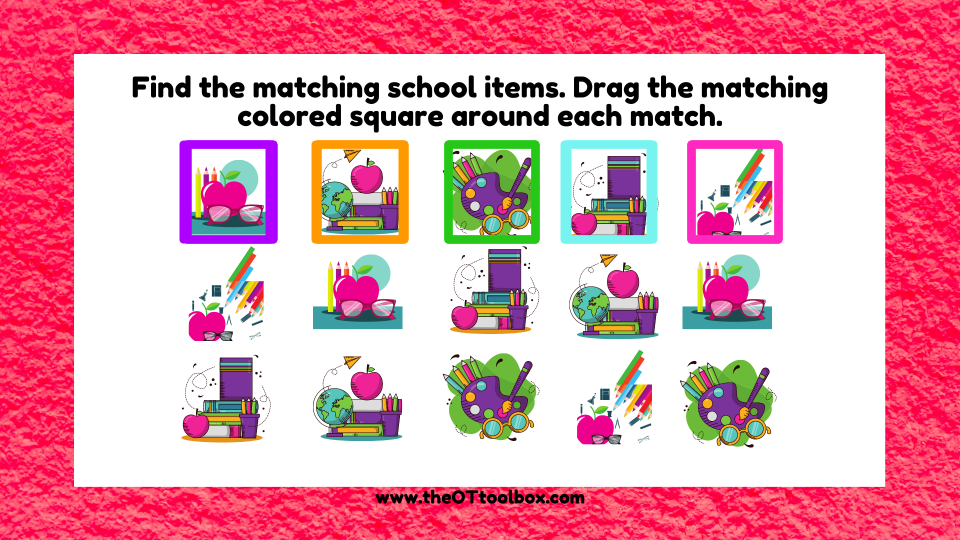
Why use a slide deck to work on visual perceptual skills?
There are many functional skills that are impacted by visual perceptual difficulties. Some examples include:
- Letter reversal
- Poor line awareness in handwriting
- Poor margin use in written work
- Difficulty copying written work
- Trouble recognizing patterns and completing hands-on math problems
- Difficulty catching or kicking a ball
- Trouble with movement games like hopscotch.
- Clumsiness
- Difficulty with sports
- Difficulty drawing and copying pictures or shapes
Working on the underlying visual processing skills in puzzles and activities like the ones in this back to school slide deck can be one way to build these areas.
FREE back to school SLIDE DECK
Here’s how you can get the interactive slide deck to work on letters:
Enter your email address in the form below. Check your email and click on the button to grab your resource. Save that page so you can access these slide decks again.
Sign into your Google account. Click on the big button in that PDF that you just accessed. It will prompt you to make a copy of the slide deck. That will be your master copy of this slide deck.
Now the slide deck is on your Google account.
Share the slide deck with students. You can make a copy for each student and upload it to their Google classroom or use it in Zoom. Here is a post on FAQ for troubleshooting any issues you might run across with using or accessing the slide deck.
Be sure to sign up for other slide decks that we have to offer. You will have to enter your email address for each one so you can get the resource and make a copy of each slide deck.
Be sure to check out these other slide decks to use in OT teletherapy sessions, distance learning, or homeschooling:
This Alphabet Exercise Slide Deck is very popular.
Here is a Space Theme Therapy Slide Deck.
Here is a Strait Line Letters Slide Deck.
Here is a “Scribble theme” Handwriting Slide Deck.
Teach Letters with an interactive Letter Formation Slide Deck.
You will also want to see all of our teletherapy activities here.

Colleen Beck, OTR/L has been an occupational therapist since 2000, working in school-based, hand therapy, outpatient peds, EI, and SNF. Colleen created The OT Toolbox to inspire therapists, teachers, and parents with easy and fun tools to help children thrive. Read her story about going from an OT making $3/hour (after paying for kids’ childcare) to a full-time OT resource creator for millions of readers. Want to collaborate? Send an email to contact@theottoolbox.com.

